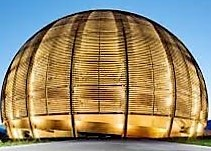Speaker
Description
Multinucleon-transfer (MNT) reactions have gained a lot of attention in the last decade following the theoretical prediction of larger than expected production cross sections for heavy neutron-rich nuclei [1] playing a key role in the astrophysical rapid neutron capture process (r process) [2]. At the Ion Guide Isotope Separator On-Line (IGISOL) facility [3] in the JYFL Accelerator Laboratory, either proton- or deuteron–induced fission on uranium or thorium targets has been traditionally used to produce neutron-rich nuclei of interest, however, the measurements have been limited to the fission fragments (A~70-170). MNT reactions are a promising method to produce a broad range of neutron-rich nuclei and in particular for the third r-process peak region close to N=126.
A dedicated gas cell and target platform have been designed for MNT reactions at the IGISOL facility using numerical calculations in CFD Module of COMSOL Multiphysics. MNT products from the 136Xe+209Bi or 136Xe+198Pt reactions enter into a gas cell through a thin entrance window of the gas cell, after which they are stopped, thermalized and transported by helium gas flow towards the sextupole ion guide (SPIG) and extraction chamber [4]. The new MNT gas cell has been characterized offline with a 223Ra alpha-recoil source to define lower limits for the production rates and lifetimes of nuclei that are accessible. The first online tests with the new gas cell were successfully performed with the 136Xe+209Bi reaction, and showed an increase of the measured count rates compared to our earlier results performed with another gas cell [5]. Results of the aforementioned tests and prospects for studies using the 136Xe+198Pt reaction will be reported in this contribution.
[1] V. Zagrebaev, W. Greiner, Phys. Rev. Lett. 101 (2008) 300122701
[2] J.J. Cowan et al., Rev. Mod. Phys. 93 (2021) 015002
[3] I. D. Moore, P. Dendooven, and J. Ärje, The IGISOL technique—three decades of developments. In: Äystö J., Eronen T., Jokinen A., Kankainen A., Moore I.D., Penttilä H., Three decades of research using IGISOL technique at the University of Jyväskylä. Springer, Dordrecht (2013)
[4] P. Karvonen et al., Nucl. Instr. and Meth. B 266 (2008) 4794
[5] A. Spataru, et al., Production of Exotic Nuclei via MNT Reactions Using Gas Cells, Acta Phys. Polon. B 51 (2020) 817
